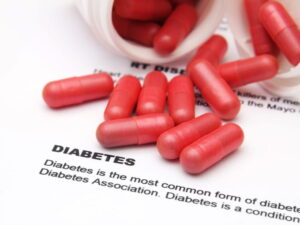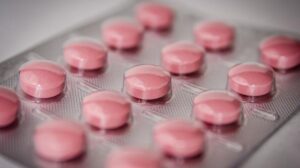Low blood sugar, also known as hypoglycemia, is a condition that occurs when the glucose levels in your blood drop below normal levels. It can be a concerning and sometimes dangerous situation, particularly for individuals with diabetes. Understanding the causes, symptoms, and medicines for low blood sugar is crucial for managing this condition effectively.
Contents
What Causes Low Blood Sugar?

Low blood sugar, medically known as hypoglycemia, occurs when the glucose levels in the blood drop below normal levels. Glucose is the primary source of energy for the body’s cells, including the brain, and maintaining stable blood sugar levels is crucial for overall health and function. Several factors can contribute to low blood sugar, including:
- Medications: One of the most common causes of low blood sugar is the use of certain medications, particularly insulin and oral diabetes medications such as sulfonylureas and meglitinides. These medications work by lowering blood sugar levels, but if the dose is too high or if they are not taken with adequate food intake, they can lead to hypoglycemia.
- Dietary Factors: Skipping meals or delaying meals can cause a drop in blood sugar levels, especially if you have diabetes or are taking medications that lower blood sugar. Eating meals that are low in carbohydrates or consuming inadequate amounts of food can also lead to hypoglycemia.
- Excessive Physical Activity: Engaging in intense or prolonged physical activity without adjusting insulin doses or food intake can cause blood sugar levels to drop too low. Exercise increases the body’s sensitivity to insulin, which can lead to hypoglycemia, particularly if you are already taking medications that lower blood sugar.
- Alcohol Consumption: Drinking alcohol, especially on an empty stomach or in excess, can interfere with the liver’s ability to release glucose into the bloodstream, leading to hypoglycemia. Additionally, alcohol can mask the symptoms of hypoglycemia, making it difficult to recognize and treat.
- Medical Conditions: Certain medical conditions or hormonal imbalances can increase the risk of hypoglycemia. For example, disorders of the adrenal or pituitary glands, liver disease, kidney failure, and certain tumors can affect glucose metabolism and insulin regulation, leading to low blood sugar.
Recognizing the Symptoms
The symptoms of low blood sugar can vary from person to person, but common signs include:
- Sweating
- Shakiness or trembling
- Rapid heartbeat
- Hunger
- Irritability or mood changes
- Confusion or difficulty concentrating
- Dizziness or lightheadedness
- Fatigue or weakness
- Headache
- Blurred vision
It’s essential to recognize these symptoms promptly, as severe hypoglycemia can lead to seizures, loss of consciousness, and even coma if left untreated.
Treating Low Blood Sugar
When treating low blood sugar, the primary goal is to raise glucose levels quickly to prevent further complications. Here are some steps to take:
Consume Fast-Acting Carbohydrates:
- Take glucose tablets, fruit juice, regular soda (not diet), honey, or hard candy.
- Consume approximately 15 grams of fast-acting carbohydrates.
- Wait 15 minutes and recheck blood sugar levels.
- Repeat treatment if blood sugar levels remain low.
Follow Up with a Balanced Snack:
- Consume a balanced snack or meal containing carbohydrates, protein, and healthy fats.
- Choose foods with complex carbohydrates and protein sources like nuts, seeds, yogurt, or lean meats.
- A balanced snack helps sustain blood sugar levels and prevents further drops.
Administer Glucagon Injection:
- In severe cases where the individual is unconscious or unable to consume carbohydrates orally, administer a glucagon injection.
- Glucagon stimulates the liver to release stored glucose into the bloodstream, raising blood sugar levels.
- Glucagon kits are available by prescription and should be used according to the instructions provided.
Adjust Medications and Insulin Dosages:
- Under medical supervision, adjust diabetes medications and insulin dosages as needed.
- Changes may be necessary based on meal timing, activity level, and blood sugar patterns.
- Avoid overtreatment of high blood sugar levels to prevent hypoglycemia.
Utilize Continuous Glucose Monitoring (CGM) Systems:
- Wearable devices that continuously track glucose levels throughout the day and night.
- Provide real-time glucose readings, trend data, and customizable alerts for high and low blood sugar levels.
- Identify patterns and trends to make informed decisions about medication dosages, meal timing, and physical activity.
List of Medicines for Low Blood Sugar

There aren’t specific medications designed solely for raising low blood sugar levels (hypoglycemia), but several products and substances can effectively treat hypoglycemia. Here’s a list:
- Glucose Tablets: Available over-the-counter, glucose tablets are specifically formulated to raise blood sugar levels quickly. They come in standardized doses, making it easy to control the amount of glucose consumed.
- Glucose Gel: Similar to glucose tablets, glucose gel provides a concentrated dose of glucose in a gel form. It’s convenient for individuals who have difficulty swallowing tablets or need a faster-acting option.
- Fruit Juice: Fruit juices such as orange juice, apple juice, or grape juice contain natural sugars (fructose) that can quickly raise blood sugar levels. Opt for 100% fruit juice without added sugars for the best effect.
- Regular Soda (not diet): Regular soda contains sugar (usually sucrose or high-fructose corn syrup) that can rapidly increase blood sugar levels. Avoid diet sodas, as they contain artificial sweeteners that do not raise blood sugar effectively.
- Honey or Maple Syrup: These natural sweeteners are rich in glucose and can be consumed to raise blood sugar levels. They can be added to food or beverages or taken directly.
- Hard Candy: Hard candies such as glucose candies or candy bars containing sugar can provide a quick source of glucose. However, be cautious with candies that contain fats, as they may delay the absorption of glucose.
- Glucagon Injection: Glucagon is a hormone that stimulates the liver to release stored glucose into the bloodstream. Glucagon emergency kits contain a powdered form of glucagon that is reconstituted with a diluent and administered by injection in case of severe hypoglycemia. These kits are typically prescribed for individuals with diabetes who are at risk of severe hypoglycemia and may require assistance from others to administer the injection.
Remember that while these products can effectively treat hypoglycemia, it’s essential to follow your healthcare provider’s recommendations and treatment plan for managing low blood sugar. Additionally, always carry a source of fast-acting carbohydrates with you, such as glucose tablets or a glucagon emergency kit, especially if you have diabetes or are at risk of hypoglycemia.
How To Take Medicines for Low Blood Sugar?

Taking medications for low blood sugar (hypoglycemia) depends on the specific medication and the severity of the hypoglycemic episode. Here’s a general guide on how to take different types of medications for low blood sugar:
Glucose Tablets or Gel:
- Dosage: Follow the recommended dosage on the packaging or as advised by your healthcare provider. Typically, one to four glucose tablets or a specified amount of glucose gel is recommended.
- Administration: Simply chew and swallow the glucose tablets, or squeeze the recommended amount of glucose gel into your mouth and swallow. Ensure that you consume the entire recommended dose.
- Wait Time: After taking glucose tablets or gel, wait for about 15 minutes before rechecking your blood sugar levels. If your blood sugar remains low, repeat the treatment.
Fruit Juice, Regular Soda, Honey, Maple Syrup, or Hard Candy
- Dosage: Consume a serving size that provides approximately 15 grams of carbohydrates. This may vary depending on the specific product and its carbohydrate content.
- Administration: Drink the recommended amount of fruit juice or regular soda, or consume honey, maple syrup, or hard candy. Be mindful of portion sizes and avoid excessive consumption.
- Wait Time: Similar to glucose tablets, wait for about 15 minutes before rechecking your blood sugar levels. Repeat the treatment if needed.
Glucagon Injection
- Preparation: If administering a glucagon injection, follow the instructions provided with the glucagon emergency kit. Typically, the kit contains a vial of powdered glucagon and a syringe or device for mixing and administering the injection.
- Mixing: Mix the powdered glucagon with the provided diluent according to the instructions. Gently swirl the vial until the powder is completely dissolved.
- Injection: Administer the glucagon injection into the muscle (usually the thigh, buttock, or upper arm) as instructed. Apply firm pressure to the injection site afterward.
Important Tips
- Always carry a source of fast-acting carbohydrates with you, such as glucose tablets or a glucagon emergency kit, especially if you have diabetes or are at risk of hypoglycemia.
- If experiencing severe hypoglycemia and unable to treat yourself, seek assistance from others or call emergency services immediately.
- Follow up with a balanced snack or meal containing carbohydrates, protein, and healthy fats after stabilizing your blood sugar levels to prevent further drops.
Remember to discuss any concerns or questions about medication administration with your healthcare provider. They can provide personalized guidance based on your individual needs and medical history.
Conclusion
Low blood sugar can pose significant risks to individuals with diabetes and others at risk for hypoglycemia. By understanding the causes, symptoms, and treatments for low blood sugar, you can take proactive steps to manage this condition effectively. Remember to monitor your blood sugar levels regularly, carry fast-acting carbohydrates with you, and seek medical attention if you experience severe or recurrent hypoglycemia. With proper management and support, you can maintain stable blood sugar levels and minimize the impact of low blood sugar on your health and well-being.
Do you want to get rid of diabetes? Join our online diabetes treatment program and reverse Diabetes naturally through lifestyle changes such as a Personalized Diet plan, Exercise, Yoga, dieticians, and health coaches.

